Best FPV Drone 2023 – DJI, budget, Emax, and more
Want to get into FPV Drones? Here's our suggestions
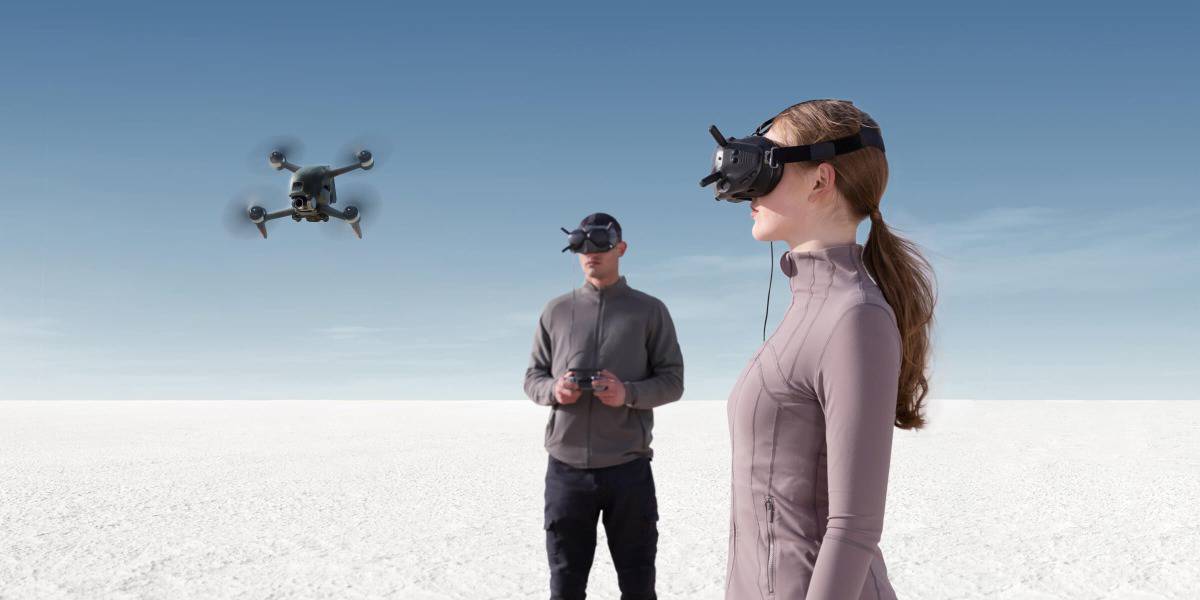
WePC is reader-supported. When you buy through links on our site, we may earn an affiliate commission. Prices subject to change. Learn more
Drones are slowly getting more and more accessible to the masses, with prices, ease of use, and customizability all increasing year over year. If you’re more artistically inclined, then you should check out the best drones for photography, as they’ll have the cameras you need for impressive aerial photography.
It’s also worth mentioning that any of these drones would make a great gift for the rapidly approaching holiday gift giving period, and some can even be found it significant discounts right now. So take a look using the ‘CHECK PRICE’ button!
Best FPV Drone 2023: products at a glance
DJI Avata
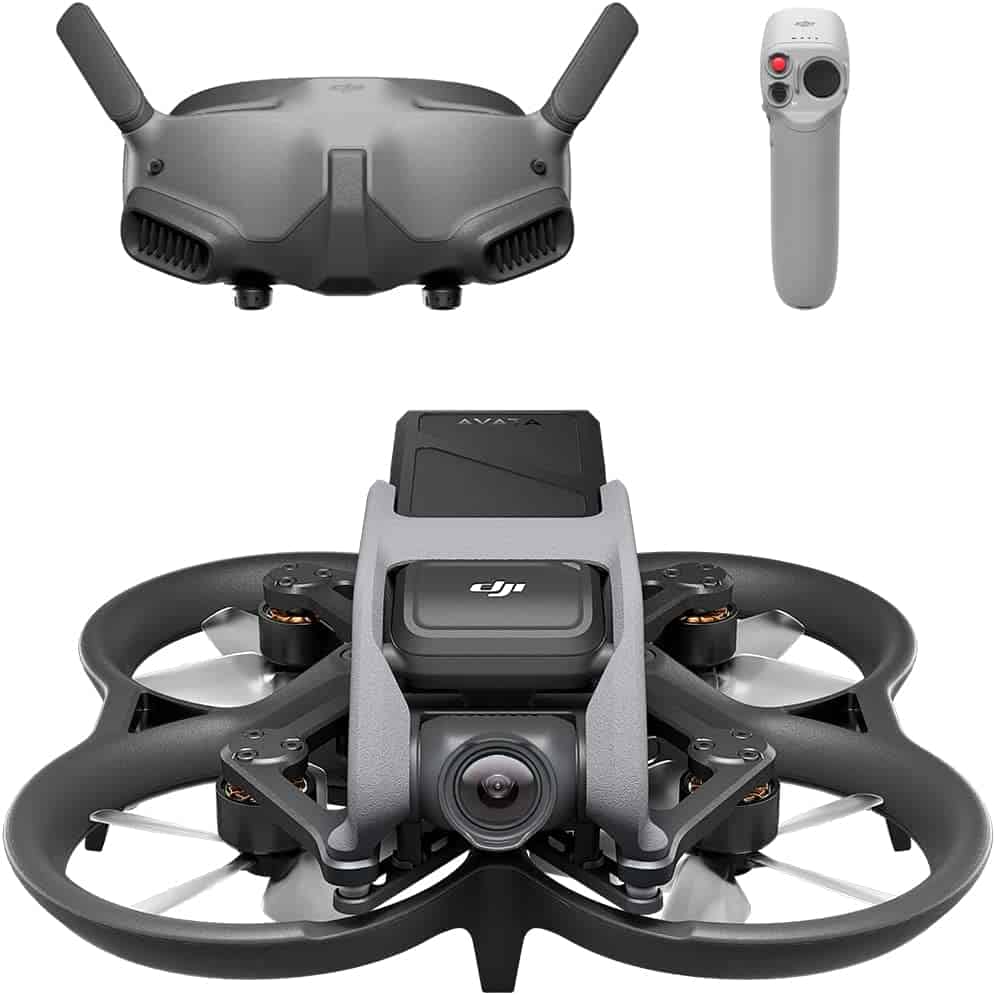
Weight
0.9lbs/410g
Flight time
18 mins
Top speed
96kph/60mph
Range
11.6km
Camera
48MP 155-degree FOV, 4k @60fps
DJI FPV Drone Combo
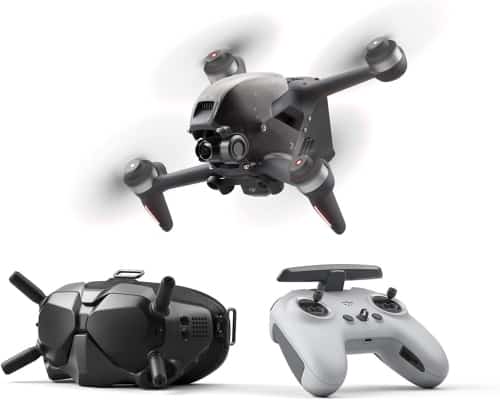
Weight
795g/1.75lbs
Flight time
20 mins
Top speed
140kph/87mph
Range
10km
Camera
4k Resolution, 150° FOV, up to 120FPS
EMAX Tinyhawk FPV Drone
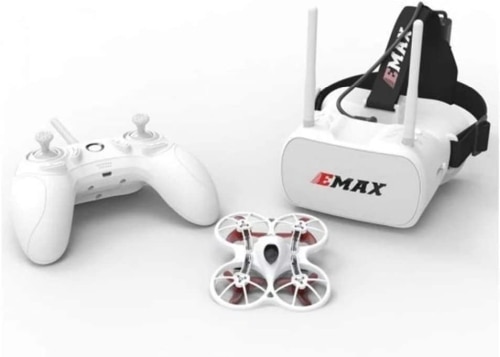
Weight
42g/1.48oz
Flight time
4 mins
Top speed
56 kph/34.8 mph
Range
200ft/61m
Camera
600TVL CMOS
Qwin Out F4 X1 FPV Drone
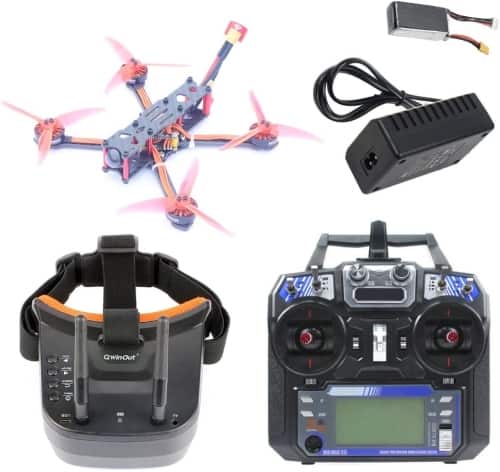
Weight
56g/1.97oz
Flight time
7-10 mins
Top speed
60kph/37mph
Range
1km
Camera
1200TVL 180-degree FOV
BETAFPV Cetus FPV Drone Kit
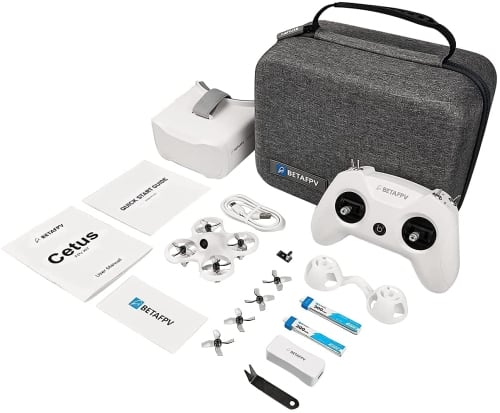
Weight
27.5g/0.97oz
Flight time
4-5 mins
Top speed
Not published
Range
80 metres
Camera
170-degree FOV 1200TVL
A lot of these FPV drones can get pretty expensive, some of them approaching ~3k, so if you want to try out the hobby without dropping too much cash, have a look at the best drones under $200 for a more accessible route into this pastime.
This means that the popularity of drones, particularly FPV drones is at an all-time high. So, let’s have a look at the best FPV Drone of 2022, and while we’re at it, we’ll go through what you need to keep in mind too.
NOW READ: DJI Avata – Everything you need to know
Best FPV Drone 2023: our top picks
Best FPV drones in 2024: reviews
That’s the boring stuff over and done with. So, let’s move on to what we all want to see, the very best FPV drones.
DJI Avata

Weight
0.9lbs/410g
Flight time
18 mins
Top speed
96kph/60mph
Range
11.6km
Camera
48MP 155-degree FOV, 4k @60fps
- Great entry level DJI drone
- Motion controls are very cool
- Propeller guards
- Hard to find at present
The DJI Avata was recently released after a long build-up of leaks, rumors, and release date guesses.
It was also massively hyped up, which can sometimes lead to a bit of disappointment, but we’re happy to say that the DJI Avata appears to have exceeded expectations.
The propeller guard is a long overdue upgrade for DJI’s FPV drones as it’ll save the end user a lot of money on replacement propellers. Honestly, it’s strange that it took them this long to integrate the propeller guard, but hey, it’s here now.
Additionally, we really like the Motion controller as it gives a fresh take on controls, and allows newbies a more intuitive way to get into the hobby.
DJI FPV Drone Combo

Weight
795g/1.75lbs
Flight time
20 mins
Top speed
140kph/87mph
Range
10km
Camera
4k Resolution, 150° FOV, up to 120FPS
- Everything you need to get started is included
- DJI has a great reputation
- Various safety modes to help you learn
- Expensive
Of course, we had to start with old mate DJI. As of March 2020, they hold around a 70% share of the world consumer drone market, so it’d be silly to miss them out.
Additionally, as market leaders, they know the value of being the first person to come to new people wanting to get into the hobby.
This is what probably lead to the DJI FPV Drone Combo. So-called because it’s an exhaustive package, containing everything you need to get going right away.
Yes, It’s pricy, but comprehensivity comes at a premium in this industry. Additionally, we are big fans of the safety modes.
They limit speed, range, and altitude for newer pilots, allowing you to get to grips with flying a drone in slowly and safely.
EMAX Tinyhawk FPV Drone

Weight
42g/1.48oz
Flight time
4 mins
Top speed
56 kph/34.8 mph
Range
200ft/61m
Camera
600TVL CMOS
- Very affordable
- Cheap and easy to repair
- Perfect beginner drone
- No use for actually recording video
EMAX has made a name for itself with affordable and rapid mini FPV Drones. Not only are they accessible, but they are also super customizable and upgradeable.
This makes them an excellent place to start when it comes to drone piloting. A cheap initial investment, potential to upgrade, and sturdy enough to withstand a few “emergency landings”.
Additionally, EMAX sells all the spares and upgrades on their website for very reasonable prices, meaning that you don’t have to go trawling through potentially dodgy electronics websites and risk getting super scammed.
Qwin Out F4 X1 FPV Drone

Weight
56g/1.97oz
Flight time
7-10 mins
Top speed
60kph/37mph
Range
1km
Camera
1200TVL 180-degree FOV
- Very lightweight
- Great mid-range option
- Low range
Next up, we find a more mid-range option, but with plenty of upgradability.
The QWin Out F4 X1 is nothing fancy, but it’s rugged enough to keep flying after a few crashes. You won’t be shooting any movie footage through the tiny camera, but it’s good enough for reaching some pretty scary speeds and the FPV google will keep you on course.
Essentially, this is an excellent choice for the people out there who have some beginner experience with piloting FPV drones and want to invest a little bit more into the hobby.
However, it’s still a comprehensive package, so you won’t have to cobble together a full system. This means it’s also ideal if you’re up for spending a little more money for the initial investment.
BETAFPV Cetus FPV Drone Kit

Weight
27.5g/0.97oz
Flight time
4-5 mins
Top speed
Not published
Range
80 metres
Camera
170-degree FOV 1200TVL
- Ideal for indoor flight
- Numerous speed/safety modes
- Very low flight time
Here’s another great beginner drone kit. It’s probably the most comprehensive drone kit out there too, including plenty of spares, the necessary tools, and a protective carrying case too.
Additionally, it includes a sort of self-protection mode where it can detect the ground and slow up before crashing, which further helps it suit beginners.
We also like the open and upgradeable nature of the BETAFPV Cetus, as you can improve the drone incrementally with different parts from many different sources.
The downside of the Cetus is the very low flight time of 5 minutes. You can of course hot swap batteries to cut the downtime, but having to land every 5 minutes is a bit annoying.
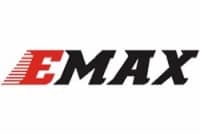
EMAX Tinyhawk 2
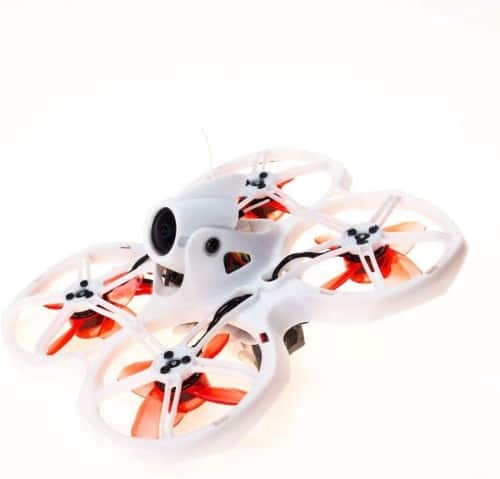
Weight
49g/1.7oz
Flight time
4-6 mins
Top speed
56 kph/34.8 mph
Range
200ft/61m
Camera
600TVL CMOS
- Fast and affordable
- Very customizable
- Some might find the range lacking
EMAX has unsurprisingly turned up once again here, and for good reason, their drones are famously fun, and particularly easy to fly. Even if you’re a crap pilot, the ease of repair and robust nature.
Of course, you won’t be winning the drone racing championships with the Emax Tinyhawk, but it’s not a million miles off, and it’s certainly good enough to help hone your skills
Additionally, spare parts, upgrades, and repairs are dead cheap too. This means that you won’t be out of pocket when you inevitably plow the poor thing into a tree.
iFlight Nazgul 5
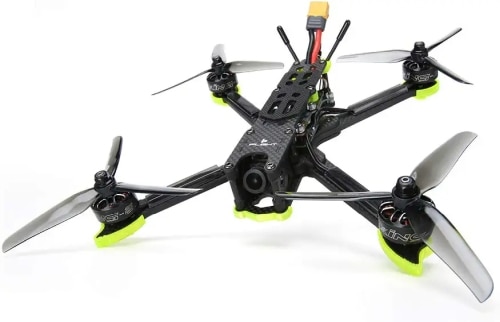
Weight
392g/0.86lbs (Without battery)
Flight time
Depends on battery
Top speed
128kph/80mph
Range
100m
Camera
GoPro (Sold separately)
- Very fast
- One of the most agile drones out there
- Very customizable
- Fully carbon fibre frame
- Pain in the ass to set up
Now we’re going in the direction of something a little more professional. This means that the cost is going to start increasing substantially, but so will the performance of the drone, especially in the case of the iFlight Nazgul 5.
We feel compelled to note here that this is not an out-of-the-box ready drone, which is where the advantages of these types of racing drones lie, though it is annoying.
Essentially, these sorts of drones are sold more as base frames, leaving the camera, battery, controller, and goggles to be purchased by the user separately. Yes, this is a painful extra cost, but this is what allows the performance of the iFlight Nazgul 5 and other similar drones to be so good.
Also, we urge you to take the specs we’ve listed with a pretty big grain of salt, as all of them are very changeable depending on how you intend to build out the drone.
Things to consider when buying the best FPV Drone of 2022
Drones, while gradually dropping in price, can still be a large investment. This means you should be mindful of a few things before hitting that big red ‘BUY’ button.
Let’s look at what you need to consider while browsing for the best FPV drone you can get in 2022.
Price
As with many other things, you get what you pay for, with features, performance, and reliability growing in tandem with the price.
However, there does reach a point where you begin to fall victim to diminishing returns, so don’t just keep increasing your budget. At least attempt to stay within it.
Flight time
This is the measure of how long the drone can be airborne between battery swaps or recharges. Due to drones being quadcopters, instead of fixed-wing aircraft, they lack the ability to glide.
Meaning that they can and will fall out of the sky if the battery dies. So, the longer the flight time the better.
However, as we mentioned earlier, batteries are heavy, so a balance must be struck between flight time and performance. A huge battery with great flight time would dampen the abilities of an otherwise nimble drone.
Weight
This affects stability, flight time, and portability. One of the main advantages of FPV drones is the ease of transportation, as you don’t need a vehicle to get to your flying location.
The weight goes hand in hand with the battery life we mentioned in the ‘Flight time’ section. As the battery often makes up most of the weight of the drone, it’s worth considering which aspect is a higher priority, flight time, or weight.
Range
This doesn’t refer to how far the drone is capable of flying, but to how far away it can be without you losing the ability to control it.
For this consideration, the longer the range the better. We don’t recommend pushing the limit too much, lest you lose control and plow your newly-purchased drone into a tree or a bench, or a child.
So, as with better life the longer the range, the better, this is especially important for seasoned pilots with the skills to go further from the base.
The beginners amongst you can get by without much range but as your skills improve, you might find yourself wanting more range.
The controller
It without saying that the controller is very important here, as it’s the only true point of contact you have with the drone. While many FPV drone enthusiasts will build their own controllers, the typical drone pilot care not soldering and programming.
Luckily, controllers are more cross-compatible when it comes to drones compared to say, games consoles. This means that you’ve got way more options than the one that simply came with the drone you bought. So, remember to look around for alternative controllers when buying your drone, additionally, it might be worth picking up an extra just to extend your flight sessions.
Flight modes
The flight modes of an FPV drone can be seen as a difficulty level akin to a video game. The best FPV drones will come with a few different flight modes that change the characteristics of the drone in flight.
These usually come in 3 flavors, one for beginners, an intermediate one, and a fully-unlocked pro or manual mode. These change the maximum altitude, and top speed, and adjust other aspects of the behavior of the drone.
The reason these are important is that they are invaluable tools regardless of skill level. You might be Radio-controlled Maverick, but even an experienced pilot might find a new drone unfamiliar and therefore tricky to control initially. This means that flight modes are pretty much vital in our opinion.
NOW READ: Best drone under $200
FPV Drone FAQs
Like a lot of technology, FPV drones, and drones in general have a lot of jargon and other unapproachable languages that make them sound more complex than they actually are. So, let’s clean up some confusion here.
What does FPV stand for?
FPV Stands for first-person view. This means that you control the drone via a set of goggles that allows you to see what the camera on the drone sees. This is popular for racing drones and other applications that require precision.
Are FPV Drones legal in the US?
It depends on the state you live in. There are additional things to consider as well, like altitude and no-fly zones. We recommend checking out the official FAA website to figure out what rules apply to you.
What is the difference between FPV Drone and Drone?
One is controlled from a first-person perspective, other is not. FPV drones have the pilot wearing a set of goggles, whereas a normal drone uses a phone or other external screen as a viewfinder.
How do FPV drones work?
In terms of the aircraft itself, there isn’t anything different here, aeronautically speaking. However, where the magic of FPV drones becomes apparent is the system by which they are controlled.
Instead of looking down at a screen, you use a set of VR-esque goggles. This provides a far more exhilarating flight experience, as it makes you feel like your head is perched right on the front of the drone.
This is possible because video signals can be wirelessly transmitted over radio frequencies, specifically 2.4GHz or 5.8Ghz. This allows low latency, and decent resolution footage.
The problem is that this is the same frequency band used by a lot of other wireless technology, like WiFi routers, gaming mice, and gaming headsets. This can result in some significant interference when flying in built-up areas full of this sort of thing. For example, flying a drone near the WePC offices would probably just make it explode as our gaff is full of this stuff.
The secret to smooth and clean video transmission is large open spaces away from buildings. Additionally, an uninterrupted line of sight is beneficial too, but not necessary for control.











